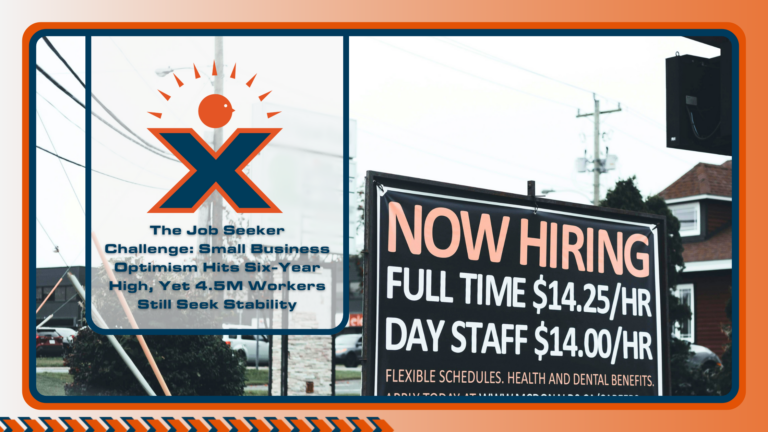Despite calm job reports, manufacturers and workforce planners face rising pressure from tightening skilled labor pipelines.
Hiring plans don’t happen in a vacuum—they respond to supply, demand, and policy. As factory orders surge and federal agencies tighten operations, one theme remains consistent: the labor market isn’t volatile, but it’s stretched. And nowhere is that more evident than in the competition for skilled workers. The skilled labor shortage is no longer a trend on the horizon. It’s here, shaping every strategic workforce decision in real time.
Orders Are Up, But So Is the Pressure
Factory orders in the U.S. rose 4.3% in March, according to the Wall Street Journal. That marks the third consecutive month of growth. Transportation equipment led the increase, pushing total orders to $618.8 billion—the highest since early pandemic disruptions.
Those numbers point to a healthy signal in the industrial economy, but growth creates another issue: demand for talent. With durable goods production climbing, businesses will need qualified machinists, technicians, and logistics personnel. That demand isn’t easy to fill, especially in regions where the pool of skilled workers continues to thin.
Hiring timelines can drag when orders increase faster than the applicant flow. This puts pressure on workforce planning, especially for companies that rely on precision manufacturing or custom output. A reactive approach risks more than missed quotas—it can undercut client relationships.
Skilled Job Growth Remains Calm, But Competitive
CNN’s preview of the April jobs report suggests that job creation is steady—economists projected roughly 180,000 new positions added. Wage growth has leveled off, giving inflation watchers some relief. However, it’s the labor force participation rate that holds more weight when it comes to staffing strategies.
The workforce isn’t shrinking, but it isn’t rapidly growing either. Employers are looking at a labor market where supply has plateaued, and roles requiring training or certifications often sit unfilled longer. The stability reported here doesn’t mean ease—it means predictability in the friction. That’s where strategy matters most.
When the market’s not in freefall or boom, competition becomes the obstacle. Especially for those facing the consequences of a labor shortage in skilled roles.
Public Job Cuts Add a Layer to Labor Shortage
The Reuters report detailing federal restructuring brought another layer to this discussion. The National Institute for Occupational Safety and Health issued termination notices as part of a broader consolidation effort. Programs tied to coal miners and firefighter protections were among those affected.
The optics of this shakeup go beyond the public sector. When seasoned professionals with specialized training re-enter the job market unexpectedly, private employers may see a brief uptick in resumes. But these aren’t general laborers. These are individuals with focused experience in safety, research, and compliance roles that often sit adjacent to skilled trades. The sudden availability of this talent could either plug a short-term gap or complicate hiring by increasing competition for similar roles in the private space.
What’s unfolding is a redistribution of knowledge workers. And without a plan, it’s easy for that shift to cause hiring bottlenecks or internal mismatches.
The Three-Point Alignment
Each piece of reporting points to a different side of the same story: growth, reorganization, and steady hiring all influence the demand for skilled labor. Manufacturing shows what happens when the need for specific talent surges. Government layoffs reveal how supply shifts without warning. Job reports confirm that the broader market isn’t chaotic—it’s competitive.
Those looking to fill specialized roles aren’t just dealing with turnover. They’re trying to stay ahead of demand spikes, labor pool shakeups, and applicant plateaus—all at once.
Staying Ready When Supply Gets Tight
Skilled labor remains the center of gravity in workforce planning this year. And while the broader hiring market holds steady, the shortage of certified and experienced skilled labor candidates will continue to test even the best recruiting strategies.
This moment isn’t about reacting to market dips. It’s about building a model that works when things stay level, but tight. The businesses that succeed won’t be the ones that move the fastest. They’ll be the ones who plan with precision and hire with purpose. Ready to maximize your hiring staff’s potential? Contact NEXTAFF today! Come explore how our customized staffing solutions can drive your business forward. Learn More About Client Solutions Today!












